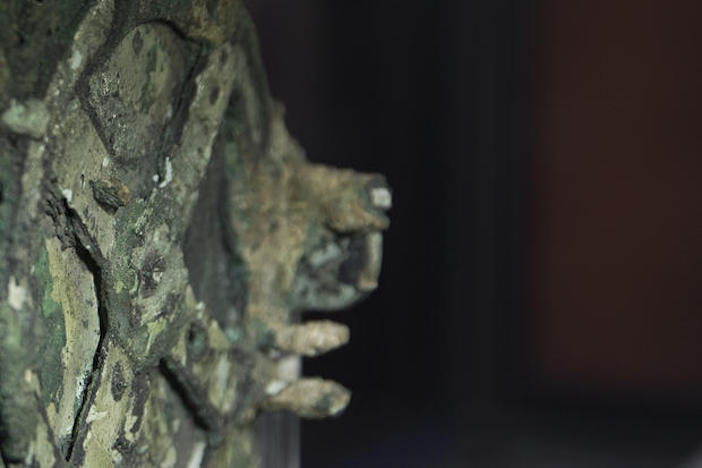For over a hundred years since its discovery off the coast of the Greek island it was named for, the Antikythera Mechanism has been the subject of extensive research, dozens of seminars and exhibitions and has captured the fascination of the world.
Today, researchers are one step closer to realizing that the mangled, rusted pieces found submerged in a shipwreck, was a spectacular device and indeed— the world’s oldest mechanized device.
After more than a decade of painstaking efforts using cutting-edge scanning equipment, an international team of scientists has been able to read and decipher about 3,500 characters of text — a quarter of the original — in the inside pieces of the 2,100-year-old remains.

A Fragment of the 2,100-year-old Antikythera Mechanism, believed to be the earliest surviving mechanical computing device, is displayed at the National Archaeological Museum, in Athens
They say it’s kind of a philosopher’s guide to the galaxy and a calendar of the sun and the moon that showed the phases of the moon, the position of the sun and the moon in the zodiac, the position of the planets, and predicted eclipses. Nothing of the sort was known to be made for well over 1,000 years.
The letters — some just 1/20 of an inch tall — were engraved on the inside covers and visible front and back sections of the mechanism, which originally had the rough dimensions of an office box-file, was encased in wood and operated with a hand-crank.
The fragments of the mechanism were raised from the bottom of the sea in 1901 from a mid-1st century B.C. shipwreck that included a magnificent collection of finds including bronze and marble statues, luxury glassware and ceramics.
Misunderstood and considered not worthy of much attention, the fragments sat in museum storage boxes for more than a century before gaining the attention of researchers from Cardiff University a decade ago who were using x-ray scanning and imaging technology.
